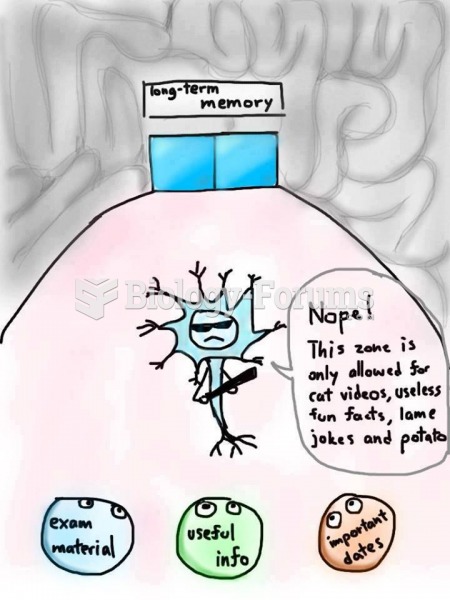Answer to Question 1
An increase in memory capacity is one proposed explanation. Evidence does not support the hypothesis that there is an increase in actual physical capacity of memory with age, but it does support the view that children become more efficient information processors with age, leaving more space in working memory for other cognitive activities--and better allowing for recall memory. Increased use of memory strategies is another explanation that has been offered for the increased recall memory of older children. Evidence indicates that older children are more likely to spontaneously use a memory strategy at the time of storage and at retrieval and are more likely to utilize the most efficient strategy. Another explanation offered is that older children have greater metamemory. It has been shown that they are more aware of the limits of their memory and that certain strategies are more helpful than others. Evidence suggests that while metamemory does improve with age, good metamemory is not required for good recall, and good metamemory does not guarantee good recall. Metamemory does confer an advantage to actual recall behavior when the child understands why a particular strategy is effective and when it will be advantageous to use it. A fourth explanation argues that older children show better recall than younger ones because they have a broader knowledge base and hence, are likely to be more familiar with the material to be retained. Evidence also indicates that familiarity and knowledge about the material to be remembered does improve recall, independent of the age of the individual. A knowledgeable child will recall more than a less knowledgeable adult about material related to that knowledge base. Since older children do, in general, know more, they are likely to exhibit better recall in most content areas. In sum, there is some support for a contribution of all four factors to the improved recall memory of older children. There is no one best explanation.
Answer to Question 2
The multistore model was proposed by Atkinson and Shiffrin in 1968 and has been tweaked in many of its details since then. The general idea of information flow is that materials pass through a series of processing stages, and the information is transformed systematically during that passage. In the sensory store (known also as sensory memory), information persists very briefly in a sensory form. It can be likened to a sensory afterimage. Separate sensory stores are found for each sensory modality, although vision and hearing have been the focus of most research. Most information is quickly lost from the rapidly decaying sensory trace. Attention can be applied to select a small amount for transfer to the short-term store (STS or short-term memory). In the STS, coding is mostly auditory, even if the information arrived through the eyes. Capacity is very small, limited to five-to-nine items, although chunking can expand the size of each item. Vocal or silent rehearsal can be applied to sustain information in STS longer than its 15 to 30 seconds of duration. Forgetting happens from the STS when rehearsal is not done, if other incoming material bumps out the present contents, or if attention is diverted elsewhere. Material may be transferred to the long-term store (LTS or long-term memory), where it may be held for durations of seconds up to the remainder of the lifetime. Most coding in long-term memory is based on the meaning of the learned materials. Subcategories of the LTS include strategic memories, which are willfully learned and willfully retrieved, and event memories, which are passively learned by experiencing one's own life. Faculty should be aware that students will have learned about the multistore model in other courses such as learning, memory, or cognition, and that the vocabulary learned in those courses may differ from Shaffer. From other sources, students may have learned that the types of long-term memory are semantic long-term memory, episodic (autobiographical) long-term memory, procedural long-term memory, and prospective long-term memory (for one's immediate medium-term future plans). Also, in courses on memory, some students might mention the Craik and Lockhart depth of processing model as an alternative to the multistore model.







